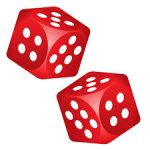by C. Elkins, OK Math and Reading Lady

Doubling and . . .
I hope you have had a chance to look at Parts 1, 2, and 3 of my multiplication strategy posts. These strategies are especially helpful with 3rd – 5th grade students (and beyond). I have been reading a book by Dr. Nicki Newton called “Guided Math in Action.” She discusses five components to being mathematically proficient. One of them is strategic competence. What is strategic competence? The National Research Council defines it as “the ability to formulate mathematical problems, represent them, and solve them.” The first process std. in Common Core (Make Sense of Problems and Persevere in Solving Them) emphasizes strategic competence in this way: “they try special cases and simpler

Halving Multip. Strategy
forms of the original problem in order to gain insight into its solution, . . . students check their answers to problems using a different method, and they continually ask themselves, Does this make sense? . . . and, they can understand the approaches of others to solving complex problems and identify correspondences between different approaches.”
With all of that said, I would like to show two other multiplication strategies: 1) Doubling and Halving, and 2) the Lattice Method. All of the strategies picture boards I have shown are available on this free PDF (It’s 10 pages): Multiplication Strategies PDF
Doubling and Halving
Doubling and halving is supported by the associative property. It also enables the student to use mental math strategies. Here is an example: Original Problem: 25 x 12. When changed to 50 x 6, I can solve it mentally which equals 300. From what I have researched and applied, here are some tips:
- Use when a problem has one even and one odd factor (or two even factors). It won’t work with 2 odd factors because you can’t break an odd number in half and still get a whole number.
- Double the odd factor and halve the even factor. Do this 1-3 times until you get two factors which can be multiplied mentally.
- Most useful when the odd factor has a 5 in the one’s place (because 5 doubled is 10, so the result will be a multiple of 10 which can usually be taken care of mentally).
How is the above problem connected to the associative property?
- Think of 25 x12 as 25 x (2 x 6).
- If I apply the associative property, I get (25 x 2) x 6 = 50 x 6 = 300.
- I can also go another step further and show that 50 x 6 = 50 x (2 x 3) = (50 x 2) x 3 = 100 x 3 = 300.
- Here is another one: Think of 15 x 24 as 15 x (2 x 12) = (15 x 2) x 12 = 30 x 12 = 360.
- See my pictures below of how that looks in array form with the problems 3 x 4 and 5 x 12.
- 3 x 4 = 3 x (2 x 2) which equals (3 x 2) x 2
- 5 x 12 = 5 x (2 x 6) which equals (5 x 2) x 6

